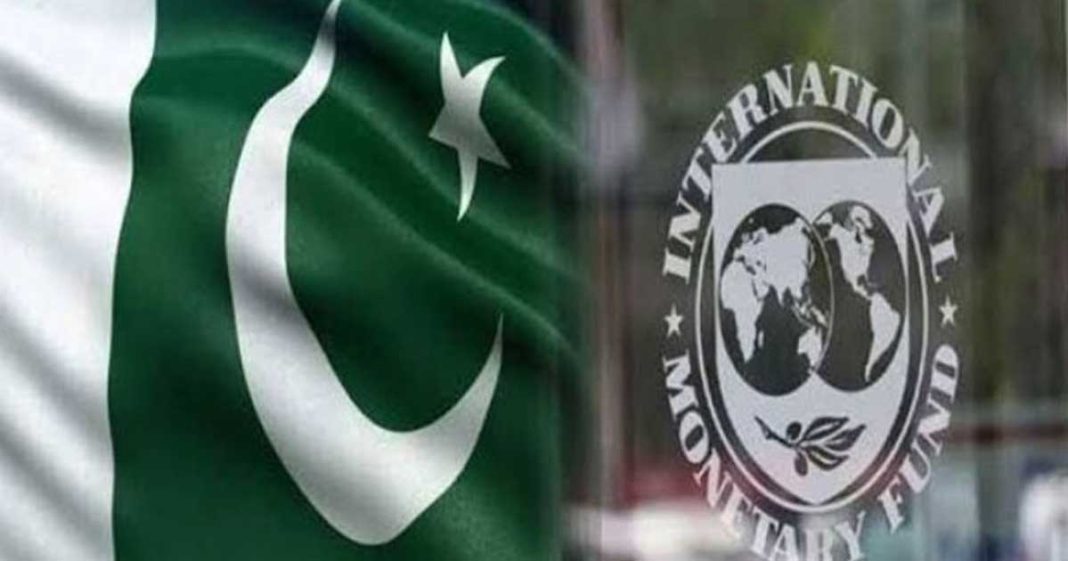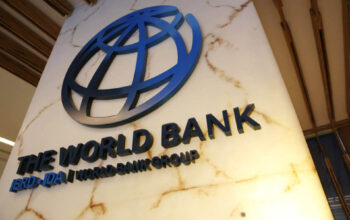By Staff Reporter
ISLAMABAD: The International Monetary Fund (IMF) said it will take over a year for inflation in Pakistan to fall into the central bank’s 5-7 percent target range, adding that downside risks from high inflation were manifasting and could push the country’s economy to ‘decelerate to 3.5 percent in FY23.’
“Real GDP growth is projected to decelerate to 3.5 percent in FY23 … the pass-through of energy prices will have some dampening effect on activity while fiscal consolidation and the loss of purchasing power due to high inflation are expected to restrain domestic demand notably,” the Fund’s staff report on the bailout programme stated.
“Assuming sustained policy and reform implementation, growth is expected to gradually return to its medium-term potential of 5 percent.”
The Fund said average consumer inflation in Pakistan is expected to surge to 20 percent in the current fiscal year “as international commodity prices are passed on to domestic consumers”.
Core inflation is also projected to remain elevated due to higher energy prices and sizable depreciation. “With tighter monetary and fiscal policies firmly entrenched, inflation is expected to fall significantly in FY24, supported by favorable base effects. The SBP is expected to reach its 5–7 percent inflation target range gradually with medium-term inflation slowing to 6.5 percent.”
The IMF said a tight monetary policy stance is critical to reducing inflation and re-anchor expectations.
“The SBP (State bank of Pakistan) will need to remain vigilant and ready to continue the tightening cycle as inflationary pressures are expected to continue over the coming year, placing further stress on expectations.”
Soaring food prices pushed August inflation to a 47-year high of 27.3 percent and its peak could still be months away, underlining the severity of the cost-of-living crunch in the struggling economy.
The reading was up from 24.9 percent in July. Records from the central bank and office of the Pakistan Bureau of Statistics show August’s inflation was the highest since 1975.
The IMF said risks to the outlook and program implementation remain high and tilted to the downside given the very complex domestic and external environment.
Spillovers from the war in Ukraine through high food and fuel prices, and tighter global financial conditions will continue to weigh on Pakistan’s economy, pressuring the exchange rate and external stability.
“Policy slippages remain a risk, as evident in FY22, amplified by weak capacity and powerful vested interests, with the timing of elections uncertain given the complex political setting.”
It said socio-political pressures are expected to remain high and could also weigh on policy and reform implementation, especially given the tenuous political coalition and their slim majority in Parliament.
“Furthermore, high food and fuel prices could prompt social protest and instability. All this could affect policy decisions and undermine the program’s fiscal adjustment strategy, jeopardizing macro-financial and external stability and debt sustainability. “
Moreover, elevated near-term domestic financing needs may overstretch the financial sector’s absorption capacity and cause market disruption.
“Substantial risks stem from higher interest rates, a larger-than-expected growth slowdown, pressures on the exchange rate, renewed policy reversals, weaker medium-term growth, and contingent liabilities related to SOEs.”
Further delays in structural reforms, especially those related to the financial sector could hamper financial sector stability and reduce the effectiveness of the monetary policy.
“Climate change risks are mounting, including a tendency for more frequent climate-related disasters.”
The central bank, IMF said, has agreed to maintain a tight monetary policy stance to achieve real positive interest rates.
“Monetary policy transmission remains relatively weak, although it is expected to improve through the linking of interest rates on the refinancing facilities to the policy rate,” it said. “Transmission is impeded, among others, by shallow mortgage and secondary markets for government securities and private bonds, and high demand for currency that reduces the money multiplier.”
The central bank has also agreed that the pace of policy rate adjustment should consider the broader policy mix including the degree of fiscal adjustment. To enhance monetary policy transmission and strengthen governance, the authorities have agreed to reduce the interest rate subsidy provided via the refinancing facilities and phase out SBP’s involvement in these schemes over the medium term which have ballooned by almost 43 percent y-o-y and now account for 17.4 percent of private credit at end-June 2022.
Commitment to maintaining a market-determined exchange rate remains essential to reduce external imbalances and start rebuilding reserves.
Notwithstanding the recent depreciation going forward the authorities should continue to allow exchange rate flexibility and avoid suppressing any trend movement. Allowing a greater role for exchange rate flexibility to address external pressures will thus help safeguard and improve reserve buffers towards more prudent levels in line with program targets.
The current account deficit is projected to narrow to 2½ percent of GDP in FY23, down from the estimated 4.7 percent of GDP in FY22, reflecting monetary, fiscal, and energy policies consistent with moving demand to sustainable levels, and supported by the continued commitment to a market-determined exchange rate.
This current account adjustment would strengthen the reserve coverage to some 2.3 months of imports by the end of the forecast horizon, up from about 1.7 months of imports at the onset of the program.
Public debt is projected to fall by almost 7 percentage points of GDP to 72.1 percent of GDP at end-FY23, against a tighter fiscal stance and as inflation erodes the value of local currency debt. This follows an increase in the debt-to-GDP ratio from 77.9 percent at end-FY21 to 78.9 percent at end-FY22 on account of the large fiscal deficit and a depreciating exchange rate despite low real effective interest rates.
The government will also raise gas prices, cut tax leakages and withdraw more subsidies and bring back general sale tax on petroleum products to keep the bailout programme on track during the ongoing fiscal year.
The Fund also pointed out over a dozen violation in structural benchmarks, performance criteria, and indicative targets of the programme, mostly on the part of the previous government.
Copyright © 2021 Independent Pakistan | All rights reserved




